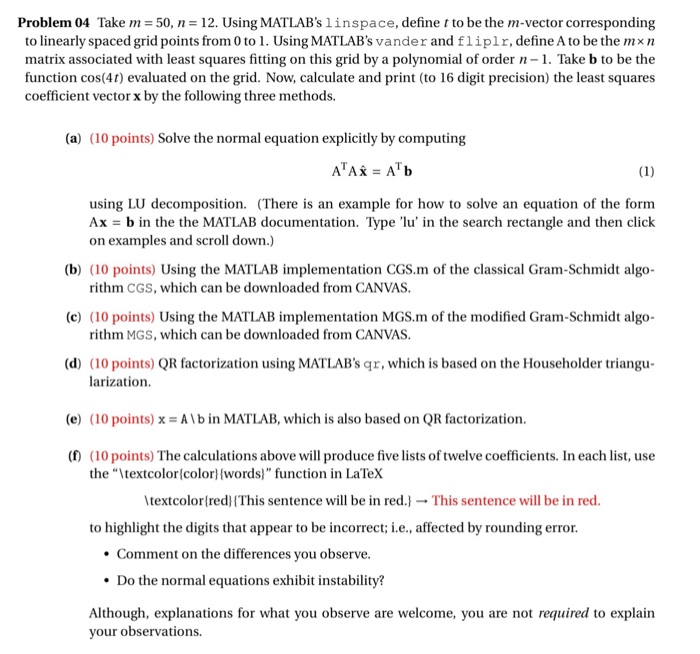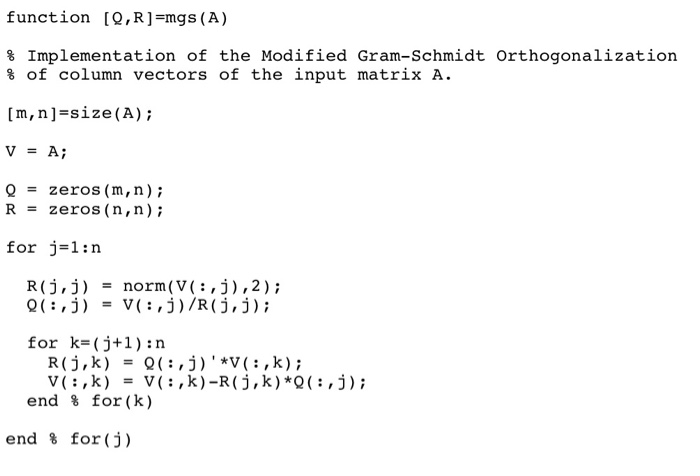part a) asks for LU decomposition

Problem 04 Take 'n = 50, n = 12. Using MATLAB's I inspace, define t to be the m-vector corresponding to linearly spaced grid points from 0 to l. Using MATLAB's vander and f 1 pl r, define A to be the m n matrix associated with least squares fitting on this grid by a polynomial of order n-1. Take b to be the function cos(4t) evaluated on the grid. Now, calculate and print (to 16 digit precision) the least squares coefficient vector x by the following three methods. (a) (10 points) Solve the normal equation explicitly by computing using LU decomposition. (There is an example for how to solve an equation of the formm Ax b in the the MATLAB documentation. Type 'lu' in the search rectangle and then click on examples and scroll down.) (b) (10 points) Using the MATLAB implementation CGS.m of the classical Gram-Schmidt algo- (c) (10 points) Using the MATLAB implementation MGS.m of the modified Gram-Schmidt algo (d) (10 points) QR factorization using MATLAB's qr,which is based on the Householder triangu rithm CGS, which can be downloaded from CANVAS. rithm MGS, which can be downloaded from CANVAS larization. (e) 10 points) x Alb in MATLAB, which is also based on QR factorization (f) (10 points) The calculations above will produce five lists of twelve coefficients. In each list, use the "textcolor colorwords" function in LaTeX textcolor(red)(This sentence will be in red.] This sentence will be in red to highlight the digits that appear to be incorrect; i.e., affected by rounding error. Comment on the differences you observe. Do the normal equations exhibit instability? Although, explanations for what you observe are welcome, you are not required to explain your observations. function [Q,R]-mgs (A) % Implementation of the Modified Gram-Schmidt orthogonalization % of column vectors of the input matrix A. [m,n]-size(A); zeros (m,n); R - zeros (n,n); for j-1:n R(j,j)norm (V(:,j),2); for k-(j+1) n end % for (k) end % for (j) function [Q,R]-cgs (A) % Implementation of the classical Gram-Schmidt Orthogonalization 8 of column vectors of the input matrix A [m,n]=size(A) ; V=A; Qzeros (m,n); R zeros (n,n): for k-1:n for j-1:(k-1 end R(k,k) norm(V(:,k)); end










